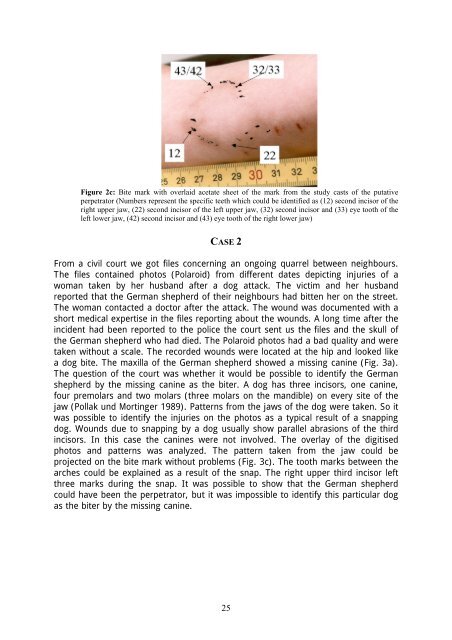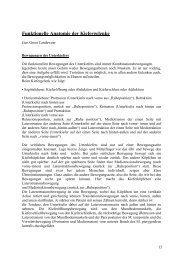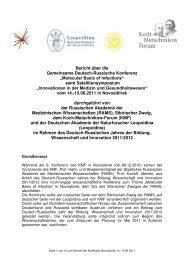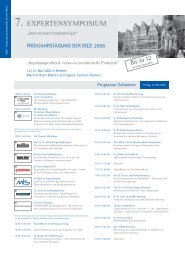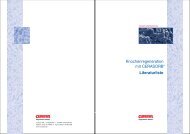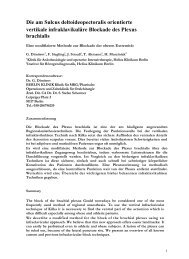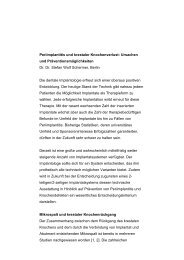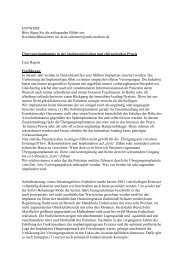NEWSLETTER AKFOS (2008) Jahr 15: No.1 - Berlin Klinik
NEWSLETTER AKFOS (2008) Jahr 15: No.1 - Berlin Klinik
NEWSLETTER AKFOS (2008) Jahr 15: No.1 - Berlin Klinik
Sie wollen auch ein ePaper? Erhöhen Sie die Reichweite Ihrer Titel.
YUMPU macht aus Druck-PDFs automatisch weboptimierte ePaper, die Google liebt.
Figure 2c: Bite mark with overlaid acetate sheet of the mark from the study casts of the putative<br />
perpetrator (Numbers represent the specific teeth which could be identified as (12) second incisor of the<br />
right upper jaw, (22) second incisor of the left upper jaw, (32) second incisor and (33) eye tooth of the<br />
left lower jaw, (42) second incisor and (43) eye tooth of the right lower jaw)<br />
CASE 2<br />
From a civil court we got files concerning an ongoing quarrel between neighbours.<br />
The files contained photos (Polaroid) from different dates depicting injuries of a<br />
woman taken by her husband after a dog attack. The victim and her husband<br />
reported that the German shepherd of their neighbours had bitten her on the street.<br />
The woman contacted a doctor after the attack. The wound was documented with a<br />
short medical expertise in the files reporting about the wounds. A long time after the<br />
incident had been reported to the police the court sent us the files and the skull of<br />
the German shepherd who had died. The Polaroid photos had a bad quality and were<br />
taken without a scale. The recorded wounds were located at the hip and looked like<br />
a dog bite. The maxilla of the German shepherd showed a missing canine (Fig. 3a).<br />
The question of the court was whether it would be possible to identify the German<br />
shepherd by the missing canine as the biter. A dog has three incisors, one canine,<br />
four premolars and two molars (three molars on the mandible) on every site of the<br />
jaw (Pollak und Mortinger 1989). Patterns from the jaws of the dog were taken. So it<br />
was possible to identify the injuries on the photos as a typical result of a snapping<br />
dog. Wounds due to snapping by a dog usually show parallel abrasions of the third<br />
incisors. In this case the canines were not involved. The overlay of the digitised<br />
photos and patterns was analyzed. The pattern taken from the jaw could be<br />
projected on the bite mark without problems (Fig. 3c). The tooth marks between the<br />
arches could be explained as a result of the snap. The right upper third incisor left<br />
three marks during the snap. It was possible to show that the German shepherd<br />
could have been the perpetrator, but it was impossible to identify this particular dog<br />
as the biter by the missing canine.<br />
25


